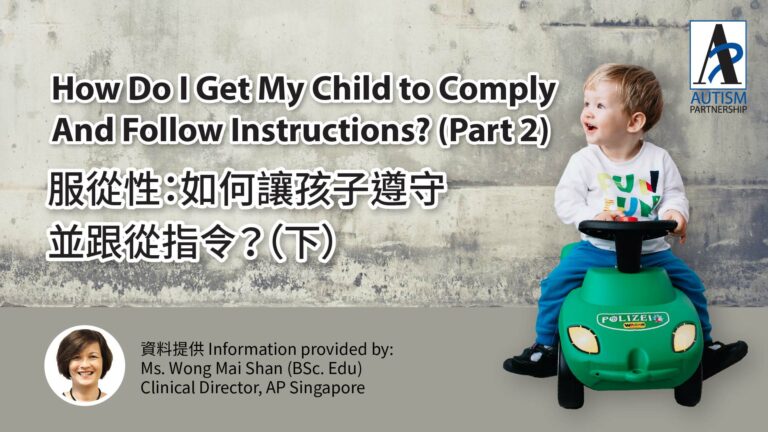
We believe that every child has the potential to learn, this is the same for children with autism. However, many children with autism are unable to begin their learning journey because of their lack of compliance, which is also known as non-compliance. Child non-compliance can be exhibited by either the child passively (e.g. by ignoring […]

Children with Autism Spectrum Disorder (ASD) often exhibit challenging behavioral problems such as tantrums, aggression, and non-compliance which are difficult to handle for school teachers and parents. What can teachers and parents do? Here are some tips to help you manage challenging behaviors: Stop and think before intervening to manage challenging behaviors. Attempt to understand […]

In Part 2, we will discuss how to help children who may be way too assertive and may use extreme ways such as snatching back, aggression to deal with situation when their toys are taken away. children who exhibit these behaviors probably has learnt from the past experience that snatching back is usually very effective […]

Children with autism often face a lot of difficulties when playing with peer. It is not uncommon that our children do not know how to deal with situations when peers snatch toys that they are playing with. Each child is different, some may appear to be passive and do not do anything to respond; some […]

I believe many parents will find the below scenario not uncommon: My child has injured himself/herself and the wound started to bleed. The moment we put the Band-Aid on his/her wound, he/she would rip it off straight away. No matter how hard we have tried, my child refused to have the Band-Aid or anything on […]

Everyone hopes to get their job done as soon as possible so they can relax and enjoy their rewards, and it is the same for children with ASD. Hence, for children with ASD to understand better the time they need to spend on each task (and to get the rewards), we use visual aiding tools. […]

Fixed interest and repetitive behaviour are some of the clinical diagnostic criteria for autism spectrum disorder. Self-stimulating behaviour is an example of repetitive behaviour, which is broadly divided into three types: Use of their facial features or body parts to get sensory stimulation, such as: tilting of the body, spinning in circles, hand flapping, drawing […]

Many parents have approached and consulted me for tips to change their children’s disruptive behavior. Frankly speaking, to change a behavior is not easy. Try to imagine that you have promised to change your habits and keep a healthy lifestyle, i.e. go to bed early and get up early, eat healthily and at regular time, […]
AP holds the belief that with quality Autism Partnership Method (APM) treatment, individuals with autism should reach their fullest potential and achieve the greatest degree of independence and highest quality of life possible.

Sign up now to get ABA and Autism related news delivered to your inbox. Enter your email to get started
Hong Kong Center
Kowloon Center

All information received will always remain confidential. We will contact you as soon as we review your message. Thanks